Fascinating Facts about Watersports: An In-Depth Exploration
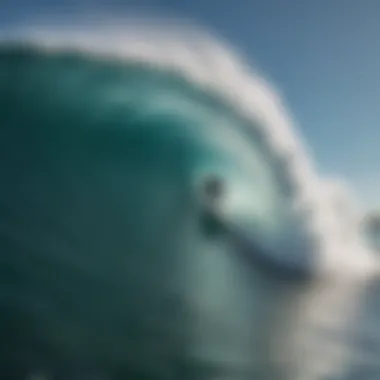
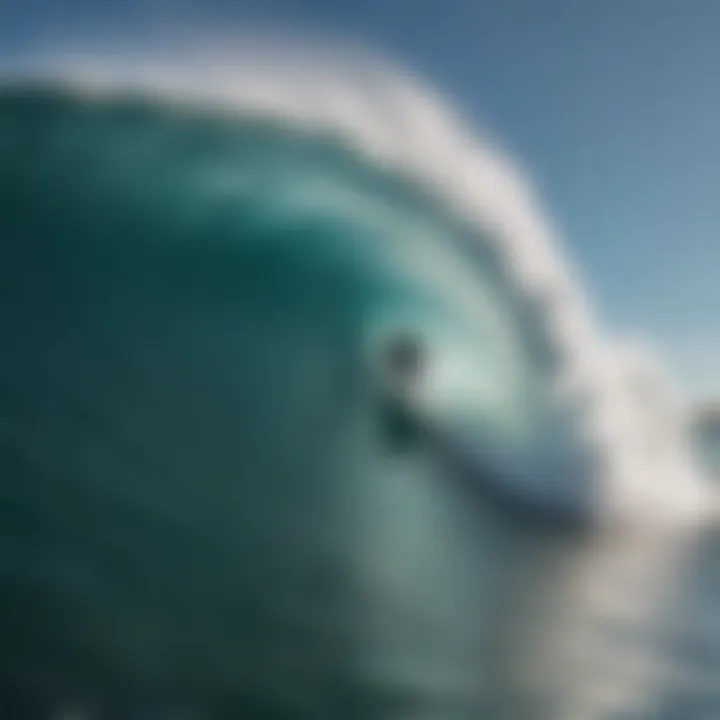
Intro
Watersports have carved a special niche in the world of recreational activities. From surfing to sailing, these water-bound pursuits entice adventurers of all ages. If you've ever dipped your toes into the ocean, glided across a serene lake, or navigated a winding river, then you've already touched the fascinating world of watersports.
The history of these sports is rich and varied. Each activity has roots that connect deeply with cultures around the globe. For instance, surfing dates back centuries, with Polynesian origins that weave tales of the mastery over ocean waves. Sailing, on the other hand, played a pivotal role in trade routes and exploration, shaping our understanding of geography.
Nevertheless, the thrill of water activities isn’t solely about their past. Each sport harbors its own set of techniques and skills that can elevate the experience from mere enjoyment to an exhilarating adventure. Whether you are a novice seeking fundamental strokes or an expert figuring out the nuances of wind patterns in sailing, knowing the techniques can make all the difference.
In this exploration, we aim not just to showcase these sports, but also to dive into the nitty-gritty of techniques, safety measures, and gear. By doing so, we hope to enrich your understanding and inspire you to embrace the challenges that come with every splash and wave.
Preface to Watersports
Watersports, a captivating blend of adrenaline, skill, and appreciation for nature, signify more than just recreational activities. They embody a connection between humanity and the aquatics that cover much of our planet. Engaging in these sports fosters physical fitness and provides unique experiences that can deepen one's understanding of marine ecosystems.
As we dive into this exploration, the aim is to inspire enthusiasts to consider the historical, cultural, and technical worlds surrounding various water-based activities.
Definition and Scope
Watersports encompass activities done in or on water. They can include both individual and team pursuits, ranging from surfing and sailing to kayaking and diving. While they might seem like simple leisure activities, the realm of watersports is rich. Each sport contributes its unique history and techniques to the tapestry of maritime human experience.
Historical Overview
Early Beginnings
Early watersports can be traced back to ancient civilizations, where peoples relied on waterways for survival and transportation. According to findings from various archaeological digs, some of the earliest forms of watercraft were rudimentary canoes and rafts made from reeds in the Nile, or later, wooden boats utilized by Polynesians for their epic ocean traversals. These early endeavors established a fundamental connection between humans and water, evolving alongside society. Their greatest influence lies in how they paved pathways for future explorations and the birth of various water sports as we know them today.
Cultural Significance
The cultural importance of watersports is undeniable. They often reflect a community’s values, traditions, and respect for nature. Consider surfing, which originated in Polynesian culture—the sport gained prominence beyond its roots and now symbolizes a lifestyle and an expression of freedom. Such sports often help bridge the gap between establishing relationships and nurturing ecologically friendly behaviors. These aspects make their contribution not just recreational but nurturing cultural identities and heritage as well.
Evolution Over Time
Over centuries, watersports evolved dramatically—from survival mechanisms to competitive and leisurely activities. The introduction of modern equipment changed the game. For example, the invention of the sailboat allowed for more efficient travel and trade, creating a lasting impact on commerce and exploration. Today, advanced materials and technology have transformed water sports, enabling both recreational sailors and professional athletes to push their limits further than ever before. This evolution showcases not just technological advancement but also a shifting perspective regarding the relationship humans hold with the water.
Watersports are a reflection of cultural heritage and advancements over time, creating pathways for exploration and community bonding.
Understanding these dimensions of watersports provides a thorough foundation for appreciating the various activities covered in this exploration. As we transition to discussing specific areas such as surfing, sailing, kayaking, and diving, it's evident that each sport has its own unique narrative, contributing to a broader understanding of humanity’s adventures on water.
Surfing: More Than Just a Wave
Surfing is not merely a sport; it embodies a lifestyle and a culture that draws people from all walks of life. The act of riding waves provides not only physical thrills but also a sense of connection to nature and the ocean. This section shines a light on the key elements that make surfing a prominent feature in the world of watersports. Discussing the intricate origins and unique culture surrounding this beloved pastime helps to underscore its significance in this exploration of watersports.
Origins of Surfing
Polynesian Influence
The roots of surfing trace back to the ancient Polynesians, who were among the first to ride the waves. Their history involves a rich culture that intertwined communal activity with nature. The Polynesians recognized the ocean's power and tides, thus standing out as some of the most skilled watermen of their time. They not only invented surfboards but also celebrated the act of surfing in ceremonies and storytelling.
One of the most notable characteristics of Polynesian influence is the intricately crafted surfboards made from local woods, such as koa. This craftsmanship was not only functional but also a cultural expression. The mana—spiritual energy—held within each board added a layer of significance to the ride. As a result, the deep-rooted traditions of the Polynesians serve as a beneficial foundation for this article, enriching the narrative surrounding surfing's origins and cultural heritage. However, one must consider that while these ancient methods are inspiring, they also present challenges in today's modern surfing practices.
Modern Popularity
In recent years, surfing has surged in popularity, transforming from a niche activity into a global phenomenon. The emergence of surf schools and wave parks has made the sport accessible to countless enthusiasts at various skill levels. Surfing is now not just an exclusive activity for the skilled few; it invites beginners to engage and experience the thrill.
Modern surfing facilitates a community spirit, as surfers connect over shared experiences across diverse locations—from Hawaiian beaches to Australian coastlines. The ease of sharing moments on social media platforms, like Facebook and Instagram, further bolsters the sport's visibility. Yet, this visibility has its drawbacks, with increased crowds at popular spots leading sometimes to a competitive atmosphere that could affect the laid-back vibe of surf culture.
Unique Facts about Surf Culture
Terminology and Lingo
The world of surfing boasts a language that is uniquely its own—filled with specific terminology and lingo that reflect its vibrant culture. Words like "swell," "tube," and "wipeout" transform everyday conversations into a special lexicon that only a surfer might fully appreciate.
This distinct language not only enhances the camaraderie among surfers but also serves as a cultural marker, distinguishing surfers from the general population. Embracing this vocabulary allows newcomers to integrate more easily into the surf community. However, an abundance of jargon can equally create a barrier for those just starting out, making it necessary for experienced surfers to foster inclusivity.
Famous Surf Spots
Certain locations have become legendary within the surfing community. Beaches like Pipeline in Hawaii or Jeffreys Bay in South Africa draw surfers from all over the globe, each hoping to test their skills against the famous waves.
These famous surf spots are key contributors to the allure of surfing. They offer unique conditions and challenges that cater to different levels of surfers. However, these locations often face environmental pressures due to increased foot traffic, prompting discussions about sustainable surfing practices. The local communities surrounding these areas can experience significant shifts in culture and economy, indicating the deep interconnectedness between surfing and the environment.


Environmental Impact
Surfing, while an exhilarating sport, does intersect with environmental concerns, especially as popularity surges. The demand for surf-related products has led to significant use of resources that can be detrimental to oceans and coastlines.
Nonetheless, there is a growing movement toward eco-friendly practices, emphasizing sustainable materials for surfboards and responsible tourism. Surfers are becoming increasingly aware of their environmental footprint, which poses both a responsibility and an opportunity. By promoting awareness and engaging in conservation efforts, surfers can protect the very landscapes they love. Addressing these environmental impacts is not only beneficial for the sport but essential for preserving the oceans that provide adventure and connection to countless individuals.
Sailing: The Art of Wind
Sailing represents not just a mode of transport but a rich tapestry interwoven with history, skills, and natural forces. This section holds significant weight in understanding watersports because it draws on the inherent relationship between humanity and nature. By harnessing the wind, sailors can explore vast oceans, embrace adventure, and connect with the environment in ways that few other activities allow. Whether one is a seasoned mariner or a novice trying their hand at the tiller, sailing opens up a world of challenges and rewards that not only test physical stamina but also cognitive skills.
Sailing Mechanics
Sailing mechanics encompass the fundamental principles governing how a vessel moves through water, propelled by wind. These mechanics unveil the intricate role that nature plays in this age-old practice.
Forces of Nature
The forces of nature serve as the backbone of sailing. This concept revolves around how wind and water interact to create movement. When wind strikes the sail, a combination of lift and drag comes into play. The unique characteristic of the wind is that it provides a renewable source of power, which is both plentiful and free. This eco-friendly aspect of sailing not only helps reduce carbon footprints but also brings a sense of mindfulness as sailors become attuned to the natural world around them. The rhythmic dance between the boat and the wind is a sight to behold—and a power to be respected.
However, wind can also be fickle, presenting challenges that require skill and adaptability. For instance, sudden squalls can turn a peaceful day on the water into a test of seamanship. A key takeaway here is that while the forces of nature are overwhelmingly a positive feature contributing to the joys of sailing, they also carry inherent risks that demand respect and knowledge.
Types of Vessels
Diverse types of vessels exist, each meticulously designed for specific sailing conditions and experiences. From nimble dinghies that dart across calm lakes to majestic yachts that cut through ocean waves, the variety of vessels speaks to the versatility of sailing itself. This facet contributes significantly to the overall enjoyment of the sport, allowing enthusiasts to choose a craft that matches their skill level as well as their desired experience.
One key characteristic of modern vessels is the combination of tradition and technology; traditional wooden boats remain popular for their aesthetic and historical values, while advanced materials like carbon fiber have pushed performance to new heights. A unique feature of these vessels is how they can facilitate various sailing styles, from leisurely cruising to competitive racing, each presenting its benefits and drawbacks. While larger vessels can offer comfort and stability, they often require more skill and effort to manage.
Navigational Techniques
Navigational techniques in sailing are critical for safety and effectiveness at sea. Navigating through waters, especially when venturing offshore, requires knowledge of different methods to reach your destination.
Celestial Navigation
Celestial navigation employs natural celestial bodies like the sun and stars as guiding points for sailors. This ancient technique has stood the test of time and is still heroically embedded in modern sailing, especially during long ocean voyages. The beauty of celestial navigation lies in its reliance on instinct, observation, and a sense of adventure. Key characteristics of this approach include the use of navigational tools like sextants and charts, but it’s not without its limitations. Cloudy skies could obscure the stars, and technological reliance may overshadow such rustic methods.
Engaging in celestial navigation can bring profound satisfaction, nurturing a sailor's connection with the history of exploration, reminding us that we have been relying on these celestial guides for centuries.
Modern Technology
Modern technology has revolutionized the sailing experience, introducing tools such as GPS systems, radar, and navigation apps. These innovations significantly enhance navigational efficiency, providing accurate and immediate information about location and environmental conditions. The convenience of having real-time data is a game-changer, especially during challenging scenarios.
Nonetheless, complete reliance on technology comes with a caveat. For instance, while GPS is incredibly accurate, it can fail due to signal loss or other issues. Therefore, seasoned sailors still advocate for retaining fundamental navigational skills as a backup, emphasizing a balanced approach that combines both traditional knowledge and cutting-edge advancements.
Kayaking: Paddling through History
Kayaking has a rich tapestry woven through centuries of human interaction with water. Its evolution encapsulates not only a change in techniques but also the shifting perspectives of societies towards rivers, lakes, and oceans. Kayaking went from a crucial means of survival for various indigenous cultures to a globally enjoyed sport and recreational activity. This transformation allows for an exploration of diverse benefits and considerations intrinsic to the journey of kayaking through history.
Evolution of Kayaking
From Survival to Sport
Once upon a time, kayaks were practical vessels designed primarily for hunting and transportation in harsh environments. People relied on their craftsmanship to build these kayaks from natural materials. The Aleut and Inuit tribes, for instance, made kayaks from seal skin stretched over a wooden frame—indeed a marvel when you consider how each feature was meticulously thought out for efficiency both in hunting and navigating icy waters. Now, transitioning from survival tactics into the sporting realm, kayaking has taken on a new form.
Though largely rooted in its historical significance, today's kayaking offers robust physical benefits: improved endurance, strength, and flexibility. Additionally, the social dimension of kayaking cannot be overlooked. Whether in picturesque lakes or roaring rivers, it fosters a community spirit, as kayakers often band together for expeditions or races. The sport’s versatility allows participants to engage in white-water kayaking, sea kayaking, or leisurely paddling on calm waters. However, it comes with challenges that necessitate skill and caution, ensuring that safety remains ever-present.
The unique feature of kayaking's evolution is its balance between tradition and modern technological advancement. Contemporary kayaks are crafted with materials like plastic and fiberglass, enhancing durability and performance. This modernity, while beneficial in terms of accessibility and variety, may sometimes overshadow the deeper roots of the sport, leaving some enthusiasts yearning for the traditional experience.
Regional Variations
Kayaking is not a one-size-fits-all discipline; rather, it thrives in various forms across the globe. Regional variations showcase the diversity of techniques, styles, and cultural influences that shape how kayaking is experienced around the world. From the calm backwaters of the Amazon, where kayaks are designed for stealth, to the rugged coastlines of Norway, where sea kayaking allows individuals to navigate dramatic fjords, each region imparts its flavor to the practice.
The key characteristic of these regional styles lies in their adaptation to local waterways and cultural practices. For instance, traditional Greenlandic kayakers utilize sleek designs that allow quick maneuvers, reflecting their historical reliance on these vessels for hunting. Each kayak and its corresponding paddling techniques resonate with the essence of the local environment.
However, with the influx of modern equipment and techniques, some fear that these regional identities may fade. Balancing respect for these traditional practices with the lure of modern innovations challenges both enthusiasts and manufacturers alike. Still, the beauty is evident—regional variations in kayaking not only enhance the sport’s appeal but also provide an intimate connection between paddlers and the waters they traverse.
Kayaking Techniques and Gear
As the sport has grown, so has the complexity of its techniques and gear. A thorough understanding of these aspects can greatly enhance the kayaking experience.
Paddle Types
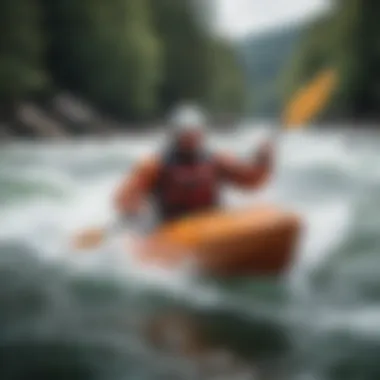
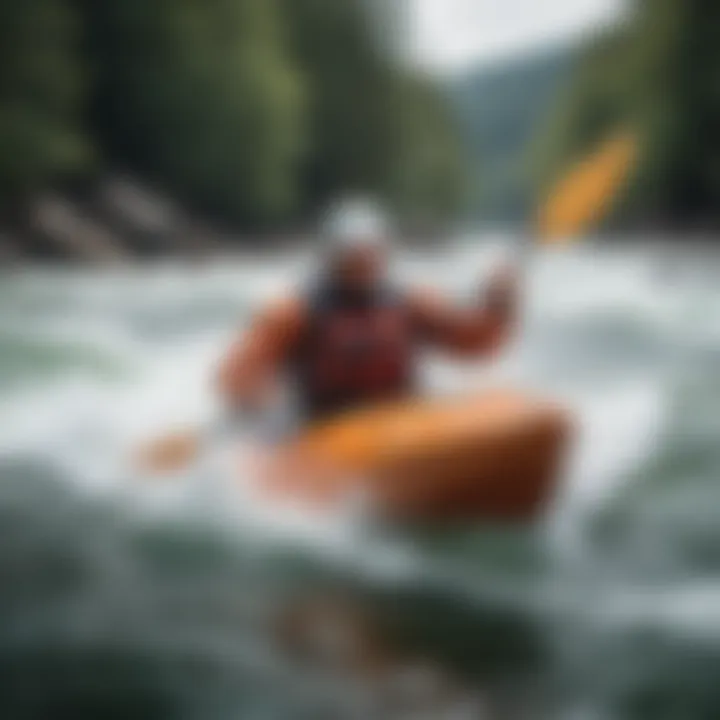
Choosing the right paddle is akin to selecting a fine instrument for a musician. Different paddle types influence performance and comfort. For example, a bent-shaft paddle allows for a more natural hand position, which can reduce fatigue during long outings. Alternatively, a straight shaft paddle, which is more traditional, may provide better control for navigating tight spaces in rivers.
The specific aspects between these paddles hinge on personal preference and the intended kayaking environment. A wide-bladed paddle serves well for swift river runs, while a narrower blade would be more apt for open-water paddling. Understanding these characteristics informs why certain styles might be more beneficial, ultimately enhancing the rhythmic connection between the paddler and the water.
Safety Gear Essentials
In the thrill of paddling, safety must never take a back seat. Safety gear essentials play a crucial role in ensuring that enthusiasts enjoy kayaking without undue risk. Life jackets, or PFDs (personal flotation devices), are non-negotiable in any paddler’s gear. Despite how skilled a kayaker may feel, unexpected circumstances can arise.
Besides life jackets, other gear like helmets and dry bags come into play, especially in swift waters. Knowledge of local conditions, tides, or potential weather changes pairs with adequate gear to form a comprehensive safety plan.
Ultimately, the advancement in safety gear reflects the broader commitment within the kayaking community to promote safe practices, allowing paddlers to focus on the sublime experience of gliding through nature’s whims.
"In kayaking, a good day isn’t just about the strokes, but feeling the water's embrace and respecting its power."
By understanding kayaking's rich history alongside its modern techniques and gear, enthusiasts not only elevate their skills but also enrich their appreciation for this aquatic endeavor.
Diving: The Deep Blue
Diving presents a unique opportunity for enthusiasts to explore one of the most mysterious realms of our planet, the ocean. This section unpacks the various forms of diving and emphasizes its significance in understanding marine life, as well as the essential role it plays in conservation. For watersports fans, diving offers not only thrilling experiences but also a bridge between adventure and awareness of underwater ecosystems. Engaging with the ocean can kindle a sense of responsibility towards its preservation.
Types of Diving
Scuba Diving
Scuba diving is a method that allows divers to breathe underwater through a tank of compressed air. It's a gateway into underwater worlds teeming with life, colors, and formations. Scuba diving is often celebrated for its variety and accessibility. One key facet is that it caters to both novices and seasoned professionals alike. Those who partake in this kind of diving generally appreciate the thrill of descending into deep waters while gazing at vibrant coral reefs, fish, and potentially even shipwrecks.
An appealing feature of scuba diving is the chance to dive in different environments, whether it's a tropical paradise or colder waters rich in unique marine life. However, it's not all sunshine; diving requires stringent training and adherence to safety protocols to mitigate risks such as decompression sickness. Therefore, while scuba diving can bring immense joy and wonder, divers need to remain cautious.
Free Diving
On the flip side, free diving strips away the tank and gear, pushing individuals to rely solely on their breath as they plunge into the depths. This ancient practice emphasizes relaxation and discipline. Free diving allows divers to explore quieter waters, focusing on the intrinsic connection between the diver and the sea. With a minimalistic approach, free divers often find themselves immersed in a serene environment and can move more freely compared to their scuba counterparts.
A notable characteristic of free diving lies in its meditative quality. By encouraging the diver to engage their body and mind, this practice can also enhance physical conditioning. Conversely, the lack of breathing apparatus means that free diving carries unique risks such as shallow water blackout. Thus, while many find thrill in this art, they must balance safety with the pursuit of exploration.
Marine Biology and Conservation
Impact of Human Activity
The ocean faces numerous threats from human activity, some of which are starkly evident in marine environments. For instance, overfishing and pollution often lead to habitat degradation. Awareness around these impacts is a crucial aspect of diving communities. Divers often emerge from their underwater experiences with a greater appreciation for conservation, realizing that the beauty they witnessed can vanish if left unprotected.
By understanding these adverse effects, divers can advocate for sustainable practices in watersports as well as promote more informed choices about marine interactions. As diving becomes more popular, addressing these impacts becomes essential, making it a pertinent topic for the wider community.
Protecting Underwater Ecosystems
Efforts in protecting underwater ecosystems range from local conservation initiatives to global awareness campaigns. Among divers, there's a growing movement to practice conservation-minded diving. This can involve participating in cleanup efforts after diving sessions or advocating for marine protected areas.
The unique connection that divers often develop with the ocean can serve as a powerful incentive for them to engage in these conservation efforts. As divers, they're not just thrill-seekers; they're often stewards of the sea, passionately sharing their insights with others. This commitment not only preserves marine heritage but also educates others about the beautiful complexity of marine ecosystems.
"By diving deeper, we not only discover the underwater world but also our responsibility in preserving it for future generations."
Diving opens doors to unexplored territories while simultaneously giving rise to environmental consciousness. It brings to light the delicate balance between enjoyment and responsibility that is crucial for the sustainability of these aquatic playgrounds.
The Psychology of Watersports
Watersports are not just about the adrenaline rush or the thrill of riding the waves; they also play a significant role in the psychological well-being of individuals. Engaging in these aquatic activities can greatly enhance mental clarity, relieve stress, and foster a sense of community. Through this lens, we can explore the mental health benefits of watersports, as well as how they facilitate connections between people, creating supportive networks among enthusiasts.
Mental Health Benefits
Stress Relief
Stress relief is a top consideration for individuals seeking a break from their demanding lives. Watersports, whether it’s diving into the ocean or sailing on a calm lake, provide an escape from daily pressures. The water is known for its calming effects; the sound of waves can melt away tension and bring a sense of tranquility.
Many find that being immersed in nature — the open sky, the sun on their face — while engaging in water activities serves as a refreshing mental reset. This form of stress relief is not just recreational, but a recognized therapeutic approach in many settings. These activities enable participants to momentarily disconnect from their worries and rejuvenate their state of mind.
An interesting aspect of stress relief through watersports is the physical exertion involved. Something as simple as paddling a kayak or swimming laps demands concentration and effort, allowing participants to truly focus on their movements instead of their troubles, which can create a unique sense of hyper-focus on the present.
Enhancement of Focus
The practice of watersports can also lead to an enhanced ability to focus, a worthwhile aspect for anyone looking to improve their mental agility. Being on the water involves constant decision-making, whether it be adjusting a sail, navigating waterways, or managing tidal currents. This sharpens one’s concentration, how much attention is given to immediate surroundings, and can support cognitive functions.
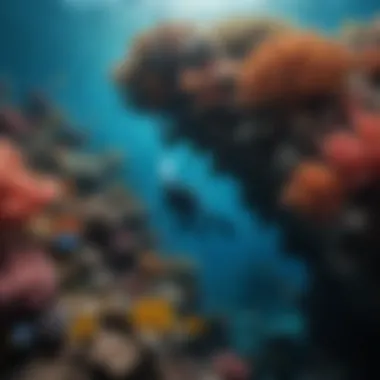
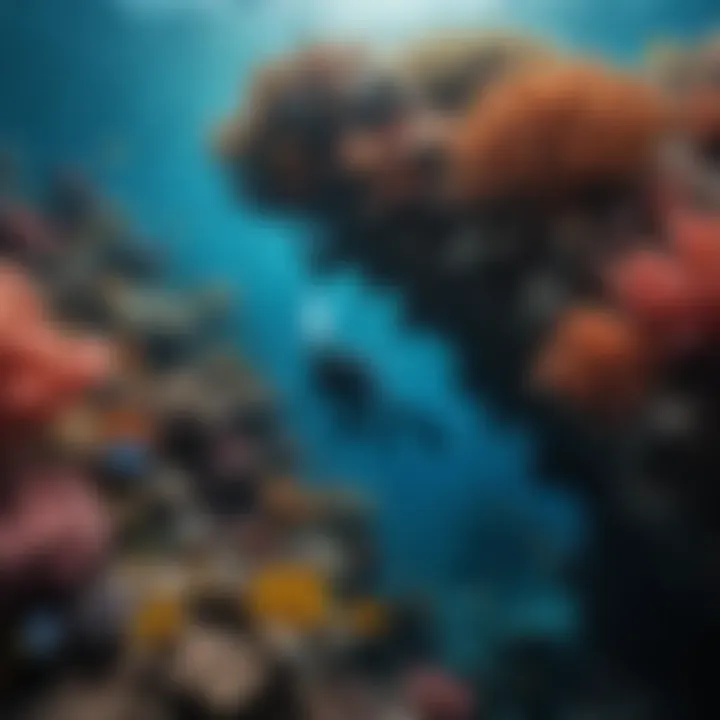
It’s interesting to note that this enhancement of focus can spill over into other areas of life. People often report increased productivity in their careers and personal projects after engaging in their chosen watersport. This transformative effect sustains the notion that focus isn't just about intense mental activity but can also be cultivated through physical engagement in enjoyable activities.
Community and Connection
Building Relationships
The watersport community is often tight-knit, bringing like-minded individuals together. This ecosystem promotes building relationships, which is crucial for emotional support and personal growth. When participants join a sailing club or a surfing group, they find themselves surrounded by others who share their passions. This common ground fosters friendships and alliances that can last a lifetime.
Additionally, these relationships can enrich the watersport experience itself. Friends who kayak together on weekends create shared memories that contribute to strong bonds. Individuals often find their best friend through a common interest in sports like diving or sailing, leading to deeper social connections beyond just the activity as well.
Sharing Experiences
Another enriching aspect of watersports is the culture of sharing experiences with others. Whether it’s posting kayaking adventures on social media, talking about a recent surf trip, or discussing discoveries made during a dive, these shared stories create a sense of belonging. The exchange of experiences often encourages learning, as seasoned enthusiasts pass down tips and tricks to newcomers.
This unique feature of sharing experiences not only builds community but also enhances the learning curve for individuals. Newcomers can gain insights from those who have gone before them, turning every interaction into a learning opportunity. This synergy supports the growth of knowledge and skill within the community, fostering a spirit of camaraderie and support that few other hobbies can replicate.
"Whether it’s the thrill of gliding over water or the joy of camaraderie on a shared voyage, the psychology behind watersports reflects a deep intertwined relationship between mind, body, and community."
Environmental and Ethical Considerations
The world of watersports is not only about thrills and leisure; it intertwines deeply with environmental and ethical responsibilities. As enthusiasts of these activities, it's essential to engage with nature without tugging at its threads. In fact, the way we've embraced these pursuits can either harm or help our aquatic ecosystems. Recognizing the impact of our actions ensures that future generations can also relish the beauty of the water.
Sustainable Practices in Watersports
Eco-Friendly Gear
When discussing eco-friendly gear, one of the distinctive aspects is its commitment to minimizing ecological footprints. Brands like Patagonia are emerging as champions by creating products with sustainable materials. This gear often utilizes recycled plastics and organic cotton, significantly reducing waste and carbon emissions. Opting for eco-friendly gear isn’t just a choice; it’s a statement that resonantes with the values of many watersports enthusiasts.
The main characteristic of such gear is its durability without compromising performance. It's often designed to withstand the rigors of water sports while being kind to the environment, making them a beneficial choice for the conscientious athlete. However, the initial price may be a tad higher. Nonetheless, over time, the need for replacement is often reduced, balancing out costs.
Conservation Programs
Conservation programs serve as essential frameworks to protect our water bodies. Organizations such as Ocean Conservancy undertake initiatives to clean up marine debris, preserving both marine life and the environments where we practice our beloved watersports. The key feature of these programs is their collaborative nature, uniting diverse groups—from local communities to global organizations.
Their impact is significant, emphasizing the importance of sustainable practices. Engaging in these restoration and protection efforts not only aids the environment but also enhances the experience for those participating in watersports. It creates a sense of community and accountability. While some programs may require a time commitment or funding, the payoff can lead to magnificent recovery of ecosystems.
Addressing Climate Change
Impact on Water Sports
Climate change has left its fingerprints on water sports. Rising sea levels and changing temperatures threaten tidal patterns and marine habitats, affecting enjoyment and safety. The major characteristic of these impacts is the unpredictability they introduce. For example, activities like surfing depend heavily on consistent wave patterns, which are increasingly erratic.
This introduces a dilemma for those who chase the next big break. Adapting to these changes is imperative for sustainability. While average enthusiasts may find it frustrating, the seasoned athlete recognizes the need to advocate for cleaner practices and face the reality of our changing climate. The advantages of acknowledging climate change include an increased awareness of services that promote better practices.
Advocacy and Awareness
Advocacy and awareness initiatives are vital for stirring public consciousness about the importance of sustainable practices in watersports. Organizations such as Surfrider Foundation actively work to promote policy changes that benefit ocean health, showing the undeniable link between watersports and environmental activism.
The unique feature of advocacy is its inclusive approach—encouraging enthusiasts from all walks of life to contribute to the dialogue. By educating communities about the repercussions of their choices, advocates empower individuals to take informed actions. The downside may be the slow pace of policy changes. However, grassroots movements often cultivate robust courtships between policymakers and communities that foster genuine understanding and change.
"Being environmentally conscious not only preserves the waters but also enriches our experiences as water sports adventurers. We have to be the change we want to see on the waves."
Embracing these factors isn’t just about preserving a hobby; it’s about safeguarding the resources and environments that support our way of life. By acknowledging our role in this ecosystem, we can ensure the future of watersports for ourselves and for the generations to come.
End: Embracing the Waters
As we reach the end of our exploration into the captivating realm of watersports, it’s crucial to reflect on the significance of what we have covered. This article not only chronicles the history and allure of various water activities but also paints a vivid picture of their future and potential. Embracing watersports means recognizing their role in fostering a connection with nature, improving physical well-being, and building community.
The Future of Watersports
Looking to the future, watersports are likely to evolve alongside advancements in technology and growing environmental consciousness.
- Innovation in Equipment: Emerging technologies promise to enhance safety and enjoyment. Imagine paddleboards equipped with built-in GPS to track your journeys or advanced diving gear that communicates directly with marine life observatories.
- Sustainability Efforts: The global push for sustainability is pushing watersports enthusiasts to adopt eco-friendly practices. For instance, solar-powered boats and biodegradable surfboards are becoming more common, helping reduce our ecological footprint.
- Inclusivity: The niche of adaptive sports is gaining traction. Watersports tailored for individuals with disabilities are making waves, encouraging everyone to enjoy these activities, regardless of their physical limitations.
In the upcoming years, as environmental awareness continues to grow, the industry could see a shift towards more sustainable practices and innovations that respect the natural world without compromising the thrill of the water.
Encouraging Participation
To ensure the future of watersports remains bright, we must actively engage and encourage participation across all levels. Here are a few ways to get involved:
- Community Events: Local clubs and organizations often host events, ranges from beginner lessons to competitions, which are great for meeting like-minded individuals. These gatherings not only promote outreach but also strengthen community ties.
- Education and Training: Providing workshops and training sessions can help demystify various watersports. Online platforms like Reddit provide spaces for discussions, where enthusiasts can share tips and tricks, while Facebook groups often promote local training events.
- Youth Programs: Introducing children and teenagers to watersports can create a lifelong passion. Many schools and community centers are adopting programs that teach kids essential skills, all while fostering love for nature and teamwork.
In the end, embracing the waters not only enriches our own lives but also ensures that future generations can experience the beauty of the aquatic world.
By adopting an inclusive mindset and investing in educational opportunities, we help ensure that watersports remain accessible to all. This, in turn, nurtures a deep respect for the environment, ultimately fostering a sustainable future for our cherished waterways.















